Today, the Charter High School For Architecture and Design (CHAD) stands at 105 S. 7th St., bound by Sansom, Chestnut, 6th and 7th Streets. It would seem a fitting place to learn about architecture and design given the long architectural biography of the location. Indeed, according to Philadelphia Dance History Journal, this was the site of Philadelphia’s very first hotel, Oeller’s Hotel. As it was located across from a major performance venue, many dancers used the hotel’s facilities to teach their craft to others as a means of supplementing their income.
As the advertisement from the Philadelphia Gazette here below demonstrates, the hotel was favored amongst dancers since its construction in 1790.
Thereafter, according to the Library Company of Philadelphia, Oeller’s was adapted into a private residence before becoming Jones’ Hotel and/or Yohe’s Hotel, depending on the historical source consulted. An image here below, also taken from the Library Company, shows the hotel in 1858. A caption below identifies the preceding Oeller’s Hotel as having been from ‘olden times.’
The structure always had multiple occupants in addition to the grand hotels which occupied the location. For instance, the 1858 Philadelphia Atlas by Hexamer & Locher shows one portion of the land is occupied by a Stereotype Foundry and the Public Ledger. Indeed, the Public Ledger building would become a staple in the location for years to come, producing what was, for a time, Philadelphia’s most widely circulated newspaper. By the late 1860s, no hotels remained on the site. The Public Ledger building is shown here below, roughly a decade after its 1866 groundbreaking, in an image borrowed from the Early Office Museum.
In the next several decades, the plot would come to be divided among several occupants. Said occupants shown in the image here below, taken from G.W. Bromley’s 1895 Philadelphia Atlas.
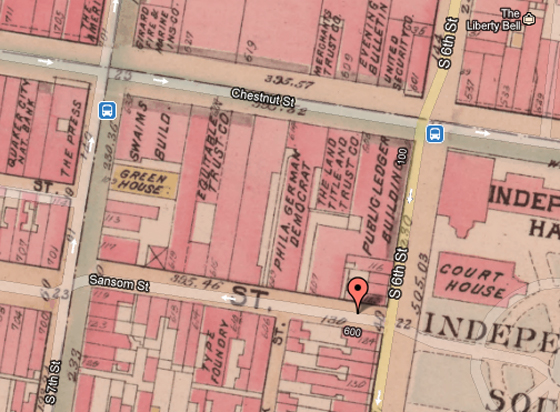
Green House, Swain’s Building, Philadelphia German Democrat, Land Title and Trust Co,, & Public Ledger Building
According to Wikipedia, the Public Ledger was founded by one William Moseley Swain, whose name is also identified here above as occupying a portion of the land in question. The newspaper thrived through the late 19th century, which allowed it to occupy most of the space formerly occupied by the above-named hotels. We provide a more extensive history of the Public Ledger phase of this building’s life in our History Buff section. Simultaneous to the successful run of the Public Ledger, Beck’s Engraving Company occupied a portion of office space as well. This is evidenced by the datestone that remains in place today, minus any visible date. Various products created by the photoengraving company, however, demonstrate that it was in operation at least through the early and mid 20th century. The image here below, an example of Beck’s work from 1914, is taken from an eBay auction.
By the 1930s, the Public Ledger, already a subsidiary to the neighboring Curtis Publishing Company, was absorbed by the Philadelphia Inquirer. By 1942, the Ledger disappeared altogether. In 1962, the sole occupant listed at the location was the Edward Stern & Co. lithograph and printing service, as shown in the Works Progress Administration’s Land Use Map.
Appropriately, the tract remains in use by multiple occupants today. In addition to the CHAD school, the ITT Technical Institute is listed at this location as well.
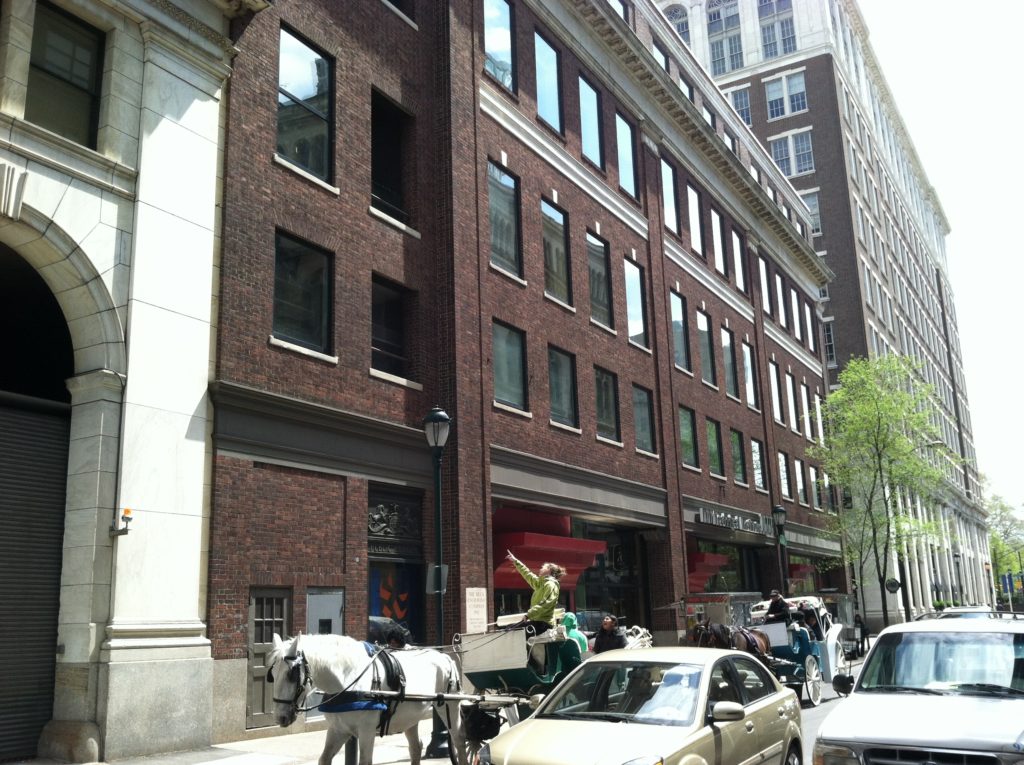
CHAD, ITT Technical Institute and a tour guide telling some people everything we just told you, 2013
–David Tomar

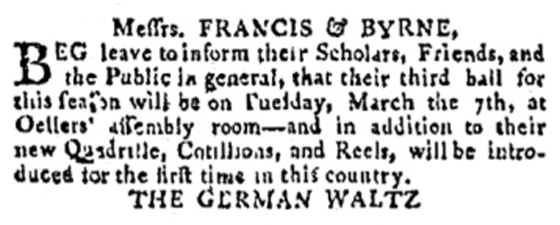
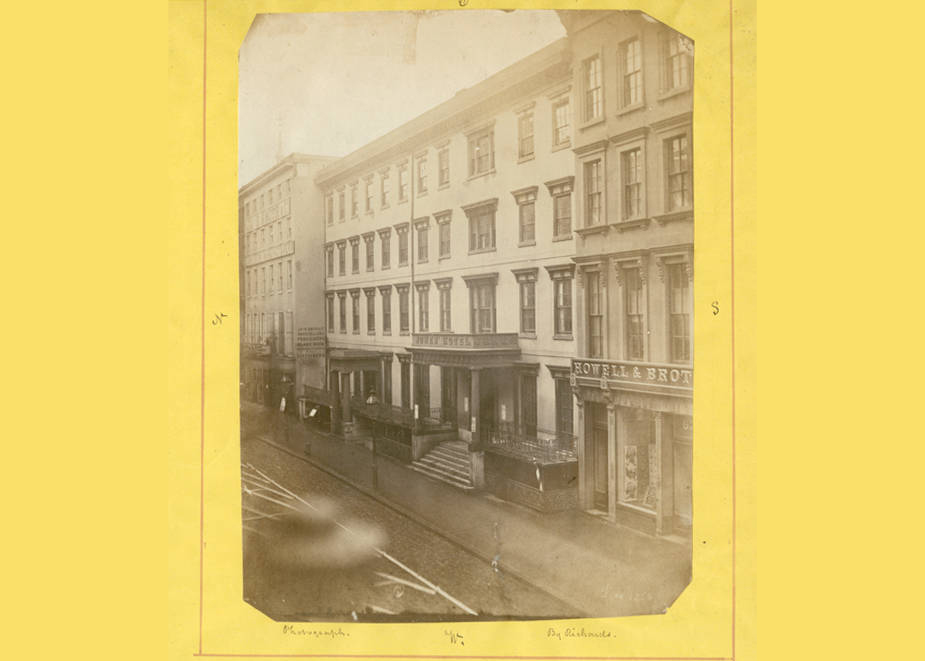
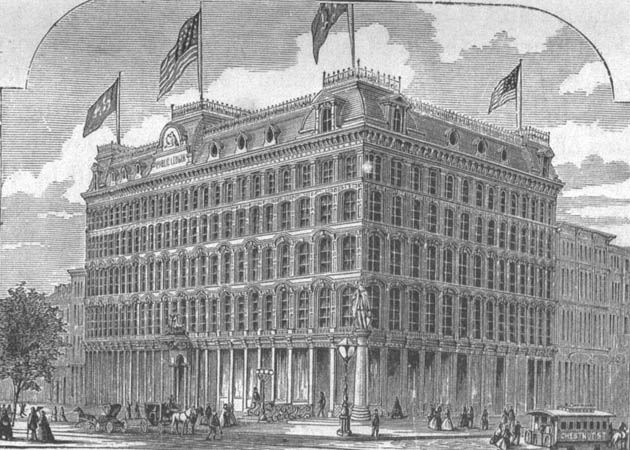
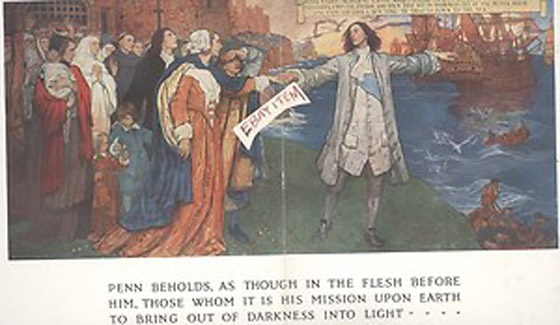
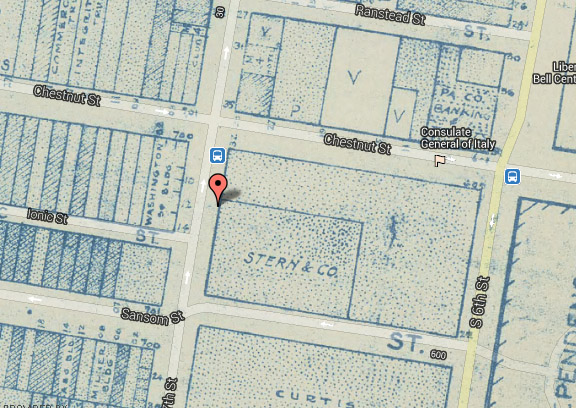
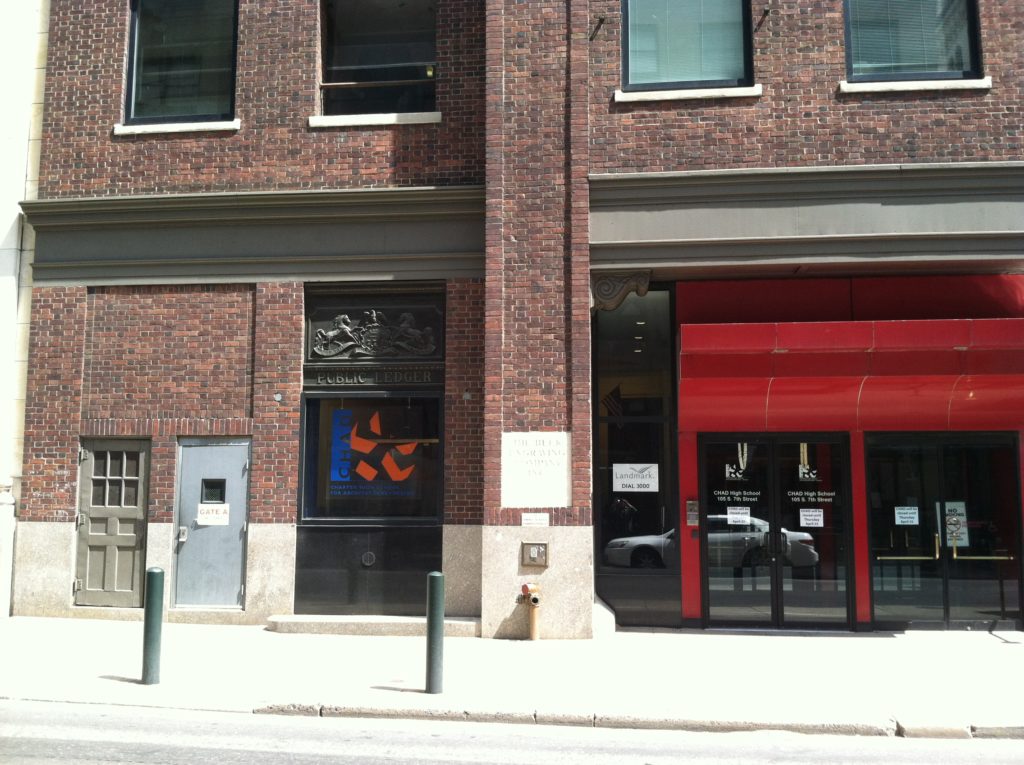
Leave a Reply